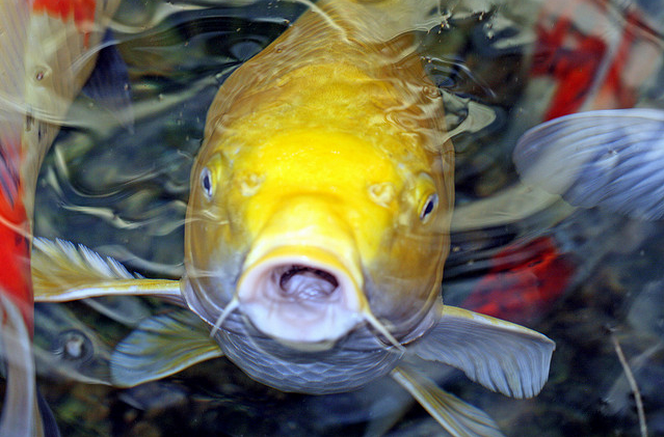Koi Fish Illness: Performing A Check-Up
A few weeks ago we wrote about diagnosing specific diseases found in your backyard koi pond in our post, Koi Fish Diseases Exposed. We only scratched the surface but we’re back to help you detect any koi fish illness you may come across! The following is a checklist of what to watch for and what to inspect when you suspect a koi fish illness is invading your pond.
STRESS
The number one factor to koi fish illness is stress. Like people, when a koi is stressed out their immunity weakens. Once these natural defense mechanisms are down, sickness and disease can easily step in. Make sure you aren’t overcrowding the pond, that predators are not giving your koi the spooks, and that there isn’t an over-aggressive koi bullying the smaller ones. These will decrease stress levels in the pond and make all of your fish friends happier and inevitably healthier.
WATER
Another huge influence on your koi fish’s health is the water levels in the pond. Koi fish put out a lot of pollutants and require regular maintenance. When levels of oxygen, nitrites, and waste become unsuitable for koi, their health suffers as a direct result. If your koi are lethargic or just seem to be acting odd, perform a water test. Maintaining safe water conditions can help ensure your koi’s good health.
SCALES
Just by looking at your koi fish you can see identify some ailments. When your koi come to the surface during feedings, take a close look at their scales. Several parasites such as anchor worms, fish lice, flukes, and ich reside on a koi’s scales and are visible to the naked eye. These are all easily treatable. However, scales that protrude from the body indicate internal swelling from infection. Chance of survival from these advanced infections are slim, though you can try using antibiotics and quarantining the fish.
GILLS
The delicate tissues of a koi fish’s gills are another indicator of health. Gills should be the color of human gums. If a koi fish seems to be having trouble breathing, first check the water to ensure oxygen levels are high enough. If the water levels are fine, the problem is with the gills. Your koi fish may be suffering from an infection that has entered the gills. Swimmer’s gill is a fungal infection that appears as a white furry coating. The herpes virus (not transmittable to humans) also attacks a koi’s gills. Herpes is a quick killer for koi, but swimmer’s gill can be treated.
AGILITY
You can also check the health of your koi fish just by watching them swim. Koi are a graceful fish. But what if they suddenly seem to swim clumsily or even look to be struggling? A koi that is struggling to control their body while swimming may have neurological damage, a disease in an advanced stage, or they may have been exposed to harmful chemicals. A koi fish that has trouble controlling their body movements is most likely very ill.
How do you check up on your koi’s health? Let us know! Share your experience with koi fish illness in a comment or write to us via the contact form.







